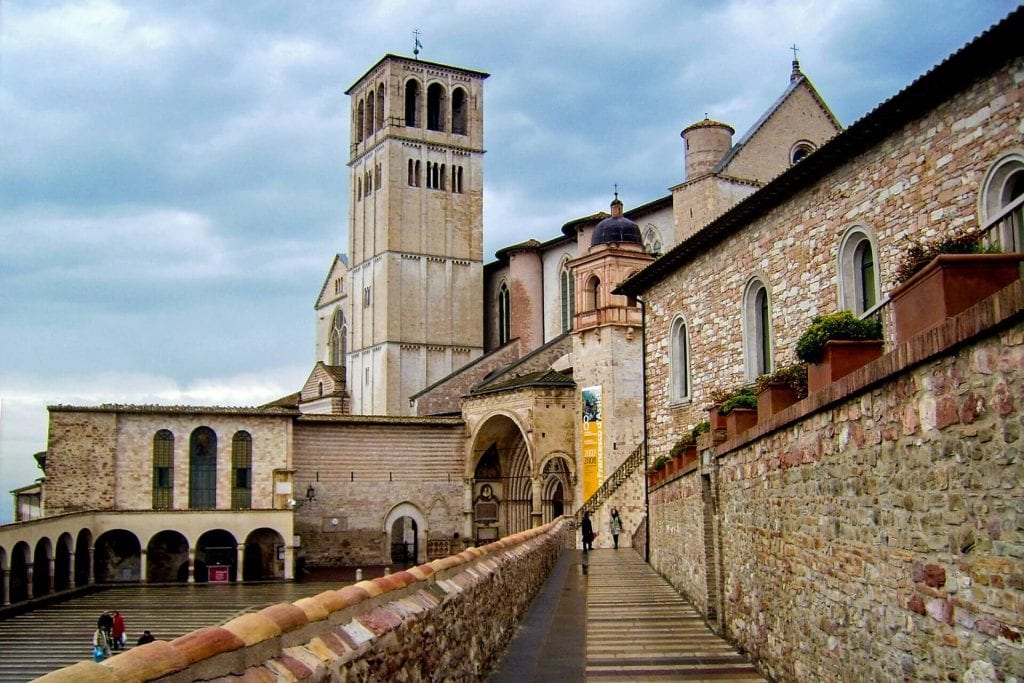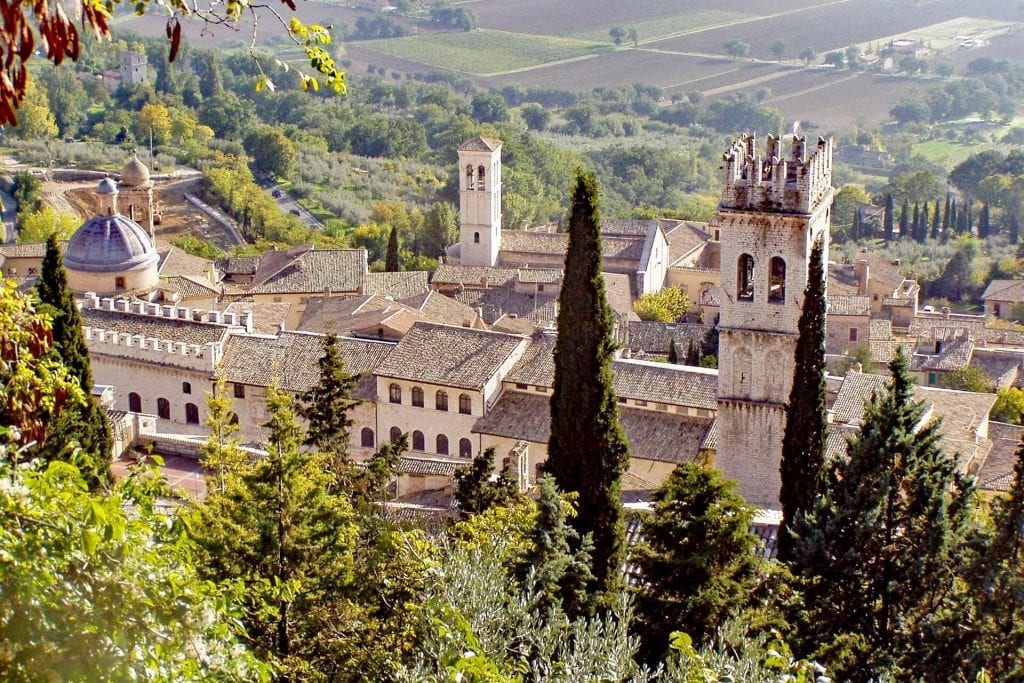Assisi is a town in the Province of Perugia in the Umbria region, on the western flank of Monte Subasio.
It is generally regarded as the birthplace of the Latin poet Propertius, born around 50–45 BC.
It is the birthplace of St. Francis, who founded the Franciscan religious order in the town in 1208, and St. Clare (Chiara d’Offreducci), the founder of the Poor Sisters, which later became the Order of Poor Clares after her death.
Around 1000 BC a wave of immigrants settled in the upper Tiber valley as far as the Adriatic Sea, and also in the neighborhood of Assisi. These were the Umbrians, living in small fortified settlements on high ground. From 450 BC these settlements were gradually taken over by the Etruscans. The Romans took control of central Italy after the Battle of Sentinum in 295 BC. They built the flourishing municipium Asisium on a series of terraces on Monte Subasio.
Roman remains can still be found in Assisi: city walls, the forum (now Piazza del Comune), a theatre, an amphitheatre and the Temple of Minerva (now transformed into the Church of Santa Maria sopra Minerva).
In 1997, the remains of a Roman villa were also discovered containing several well-preserved rooms with frescoes and mosaics in a condition rarely found outside sites such as Pompei.
In 238 AD Assisi was converted to Christianity by bishop Rufino; According to tradition, his remains rest in the Cathedral Church of San Rufino in Assisi.
The thriving commune became an independent Ghibelline commune in the 11th century. Constantly struggling with the Guelph Perugia, it was during one of those battles, the battle at Ponte San Giovanni, that Francesco di Bernardone (Saint Francis of Assisi) was taken prisoner, setting in motion the events that eventually led him to live as a beggar, renounce the world and establish the Order of Friars Minor
The city came again under papal jurisdiction under the rule of Pope Pius II (1458–1464).
In 1569 construction was started of the Basilica of Santa Maria degli Angeli. During the Renaissance and in later centuries, the city continued to develop peacefully, as the 17th-century palazzi of the Bernabei and Giacobetti attest.
Now the site of many a pilgrimage, Assisi is linked in legend with its native son, St. Francis. The gentle saint founded the Franciscan order and shares honors with St. Catherine of Siena as the patron saint of Italy. He is remembered by many, even non-Christians, as a lover of nature (his preaching to an audience of birds is one of the legends of his life).
Assisi was hit by two devastating earthquakes, that shook Umbria in September 1997. But the recovery and restoration have been remarkable, although much remains to be done. Massive damage was caused to many historical sites, but the major attraction, the Basilica di San Francesco, reopened less than 2 years later.
UNESCO collectively designated the Franciscan structures of Assisi as a World Heritage Site in 2000.
The main sights are:
The Basilica of San Francesco d’Assisi (St. Francis). The Franciscan monastery, il Sacro Convento, and the lower and upper church (Italian: Basilica inferiore and Basilica superiore) of St Francis were begun immediately after his canonization in 1228, and completed in 1253. The lower church has frescoes by the late-medieval artists Cimabue and Giotto; the upper church houses frescoes of scenes in the life of St. Francis previously ascribed to Giotto, but now thought to be by artists of the circle of Pietro Cavallini from Rome.

Santa Maria Maggiore (St. Mary the Greater), the earliest extant church in Assisi.
The Cathedral of San Rufino (St. Rufinus), with a Romanesque façade with three rose windows and a 16th‑century interior; part of it is built on a Roman cistern.
Basilica of Santa Chiara (St. Clare) with its massive lateral buttresses, rose window, and simple Gothic interior, begun in 1257, contains the tomb of the namesake saint and 13th‑century frescoes and paintings
Basilica of Santa Maria degli Angeli (St. Mary of the Angels), which houses the Porziuncola.
Eremo delle Carceri, a small monastery with church at a canyon above the town, where St. Francis retreated and preached to birds


